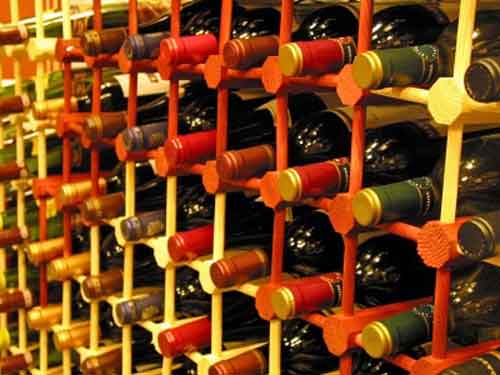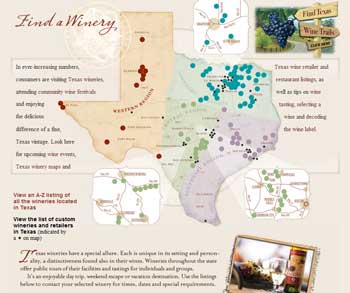
Increase Your Wine Knowledge: A Ten Step Program
I recently saw an article that addressed this issue, but for beer. It was on the website www.accidentalhedonist.com. I decided to compose the following list with the necessary modifications making it applicable to people that want to increase their wine knowledge. Like many self-help activities, it’s a ten step program.
1.Get out of your comfort zone: Many highly visible wineries have common ownership and while having different names, may actually make wines that are similar. Also, if your idea of wine comes from the Wine Spectator or Wine Enthusiast you are missing about 80 of the known wine world that does not get mentioned in these publications. It’s time to get a new prespective
2.Avoid stereotypical wines: For starters, eliminate Chardonanny and Cabernet from your Lexicon for a while and seek out reds made from Tempranillo, Syrah, Grenache, and Barbera, and whites made from Viognier, Muscat, Riesling and Roussanne. Learn what qualities these wines express and you might find something really interesting.
3.Think countries, rather than companies: There are several wine cultures out there that are strongly connected to the culture and history of the country. Some of them include France, Spain, and Italy with over 1000 years of wine history, and Argentina, American, and even locales like Texas that have 400 years of wine history. If you start to approach wines from the point of their histories, rather than from brand, your knowledge will become much broader.
4.Understand that the taste spectrum of wine is quite large: Not all wines highlight the same characteristics. Some are floral, herbal, dry, semi-dry, sweet, some are fruity and some are more austere, and finally some are simple and straightforward, and others are highly complex. In short, there are wines (actually many wines) out there for everyone. Hint: Don’t forget to taste wine with food. They can sometimes take on new and different qualities when combined with food.
5.Don’t be afraid of tasting: Many wine bars and even restaurants offer wines by the glass and even flights of wines where they serve you a short pour of three to five wines that can be tasted and compared. Use these settings as an opportunity to try new wines and learn. Hint: Many of these establishments will also pour you an ounce any of these wines for free before you order – another opportunity to see what you like or to simply learn the unique qualities of these
6.Understand that there are wines that you won’t like: Due to the number of wines available, there are bound to be some wines that are just “not you”. Some may be poorly made, but with wine quality on a worldwide rise, it is more likely that you will find wines with aromas or flavors that are not to your liking. Regardless, don’t let this discourage you. This is a time for exploration. There are so many wines and so little time.
7.Seek the knowledge of others: There is so much to learn. Don’t let it intimidate you. However, there are resources that you can use. First, get on the Internet, search using words or combination of words that are unclear to you (this includes pronunciation of foreign words, as well). Also, when you go to a wine bar, restaurant or festival, ask questions from people that can help you. Many times, I will ask the restaurant “wineguy” to tell me what wine he has that tastes like a particular wine or is within a particular price range. Other times, I will just give him the price point and ask him to select something for me that he believes will pair well with the food(s) on the table.
8.Leave your wine snobbery behind. Good quality wine is now being produced in many new regions(countries, states, appellations and counties). Just because it is not from California or France it does not mean that it is necessarily inferior. Even within these well established countries, there are new regions that offer great values for your wine dollars.
9.Enjoy yourself: This cannot be emphasized enough. Enjoy the moment, the people, the place, then enjoy the wine – they all go together. There is also one cardinal rule of wine enjoyment. Drink what  you like and like what you drink. But, unless you explore the fringes and hinterlands of the wine world, you are missing so many good experiences.
you like and like what you drink. But, unless you explore the fringes and hinterlands of the wine world, you are missing so many good experiences.
10. Last, but not least…..Drink Local (www.drinklocalwine.com): Many small artesinal, micro-wineries are operating in states around the USA. For example, in Texas, we now have over 170 wineries that include one huge (Gallo-type)volume wine producer and six to eight large premium wineries. That leaves about 160 other wineries here in Texas. Many of these wineries are micro/small wineries with case productions from 500 up to 10,000 cases. Many of these wineries are true ma-and-pa operations only one step up from hobbiests, but others are growing boutique wineries that are making serious wines. It is easy to find a winery using winery locator websites in your area such as this Texas site: http://www.gotexanwine.org/findwinesandwineries/. Don’t overlook these wineries just because they are not well knownhousehold names.

Be the first to comment